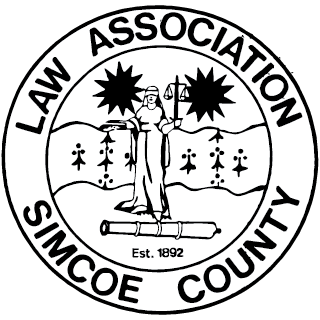[jwplayer config=”Single Page” mediaid=”1210″]
Keeping Your Divorce Out Of Court Transcript
Cindy: Hi, I’m Cindy Scharff, and in this video segment I’m going to speak to you about alternative dispute resolution. If you’re going through a matrimonial breakdown or a breakdown of your relationship, you might be feeling like you don’t have any control at this point. The process that you choose with respect to your breakdown of your relationship is really important in that, that is one area where you can exercise a lot of control.
There are many alternatives to the traditional court centered approach, and I think it’s really important that you hear about them as options before you make a decision about how you want to proceed. My colleague, Paul Slan, is going to speak to you about a couple of alternative dispute resolution methods, being mediation and arbitration. I’m going to speak to you about collaborative law which is a newer kind of method with respect to dispute resolution.
I think it’s important that you give all of these methods serious consideration, and in my opinion, the methods that we’re going to speak to you about allow you to gain some control in terms of how you want to resolve your issues resulting from your matrimonial breakdown. They give you more flexibility, allow you to be a little bit more creative than the letter of the law and being in court.
As well, one of the biggest advantages to these kinds of alternative dispute resolutions is that they assist you in preserving your ability to communicate as a family unit, especially if you have children because once your issues are resolved doesn’t mean that you’re going to stop communicating as a family because you’ve got to co-parent in the future.
Now, let’s hear from Paul with respect to mediation, and then I will be back to speak to you about collaborative law.
Paul: I do mediation and I enjoy doing it because it offers my clients a less stressful and less expensive way to resolve their disputes as opposed to the litigation process. It gives me a feeling of accomplishment when they’ve arrived at their own agreement rather than having it imposed upon them by some third party. Let me describe what a day at mediation is like.
Parties will attend normally at the mediator’s office to sit in a board room. They will meet with a mediator first to discuss preliminary matters, such as whether the mediation will be open or closed, how the fees are going to be paid for the mediation, whether there are any concerns about unequal distribution of power in the process, and what issues are to be resolved. Once those issues have been dealt with, the parties will sit with the mediator in a board room, generally, both parties and perhaps their lawyers if they so choose to begin the process.
If there’s any discomfort with that arrangement, the parties can be in separate board rooms, and the mediator will go back and forth.
In Ontario, the mediation process is completely voluntary. Both parties have to be willing to enter into it. The role of the mediator is to facilitate the parties at arriving at an agreement. The mediator does not make decisions for the parties. The mediator is there to assist them in coming to their own agreement.
The benefits to mediation are firstly, it is less expensive than litigation. It’s less stressful. Generally, the resolution, if there is to be one, is arrived at much quicker than the litigation process. The persons involved generally feel that they have had a role in coming to their own agreement rather than having that decision imposed upon them by a third party. So they feel much more invested in the process and in the result.
Mediation is suited for most people. There are situations where it’s not appropriate to be used, and those are particularly situations where there’s been an abusive relationship, especially if there’s been violence in the relationship or if one party is at some type of disadvantage in the negotiation process either emotionally, psychologically, or even physically.
Mediation is an excellent way for persons to resolve their differences, but there are other options available for dispute resolution or for alternative dispute resolution. One of those is collaborative law, and Cindy Scharff is going to explain that now.
Cindy: I want to tell you about the process of collaborative law, but before I do I’d like to share with you a story about a family I recently worked with and worked through with them in the collaborative way. When we first met, we met with both lawyers and both parties. It was clear that there was a lot of hurt, a lot of anger, and a lot of issues that these parties needed to work through.
They weren’t really able to communicate with one another at that point, and the first meeting really involved a lot of communication between the lawyers. They relied on the lawyers heavily. Throughout the process, we had about a series of five four-way meetings, and throughout the process you could really see the progression of those parties beginning to be able to communicate and work through those issues so that the lawyers could take kind of a back seat through the progress. The parties really made the process their own.
By the end, the lawyers were more relying on the parties, and they were able to come up with some creative solutions with our assistance and come to an agreement that everybody was happy with. They stood up and hugged. They were able to speak about their children and who was going to get their child to hockey that night, and I was confident at the end that this family was going to be able to continue to communicate and continue to work together with respect to their children.
This was such a great moment for me as a lawyer and being involved in this process because we, to be honest, don’t see this when we’re in court. Battle lines are drawn. People take their positions, and it’s just not the same process, so we rarely see this happening. This made me a believer in the process from that moment.
It’s very, very important that people be able to continue to communicate because although your separation agreement is signed, especially if you’ve got children. You’ve got to continue to communicate in the future in their best interests. There’s some basic principles of collaborative law that you should understand, and let me tell you what they are. Basically, there are three.
First of all, one of the biggest ones that people find interesting and useful is that the parties agree at the onset that they’re not going to go to court. So you can negotiate freely without having to worry that you’re going to have to go to court or having the other party threaten you that they’re going to go to court.
The second principle is that there’s going to be full and complete disclosure of all important information during this process. Really, the lawyers and the parties work together to get that on the table. So it’s not a matter of both parties having to go out and do the work. We work together to do it, which lessens the time and lessens the cost.
The third principle is that if there’s children involved, everybody works together to find a solution that’s going to work best for the children and best for the family in general. Let me talk to you a little bit about the process that happens in collaborative law. Generally, it’s done by a series of four-way meetings which means you sit down with your spouse and both lawyers are present and sit down around a table to discuss issues.
The first meeting, you will review a participation agreement that sets out the standards for negotiation. It sets up the principle so that you know when you come into the room how things are going to go. Generally at the beginning of each meeting as well, there’s an agenda that gets circulated with respect to what you’re going to talk about that meeting so that there are no surprises.
It takes about four or five meetings on average to get from the beginning to the end. Each meeting you discuss different issues, and the process is really the client’s process. So they decide what’s most urgent to them, and what issues we’re going to discuss in what order. At the end of it, then the last meeting is generally us reviewing a separation agreement with the terms that you and your spouse have agreed to and you signing it and concluding.
Finally, Paul’s going to speak to you about arbitration.
Paul: Arbitration is a procedure whereby the parties retain a private individual to act as their judge. It’s a private court which follows many of the same procedures as litigation or as in the general court system. The advantages are you can arrive at your decision quicker, and there is less pre-trial procedures involved. You can go to your dispute resolution fairly quickly.
Once you’ve entered into the process generally you will meet with the arbitrator to again discuss the issues that are involved and the way that it’s going to be handled. Then it will be like a mini courtroom. It will take place in a board room. There will be the arbitrator who sits at the head of the table like a judge. There will be a court reporter. There will be the parties and their lawyers, and the parties will give their evidence and cross examine the witnesses. The witnesses will give their evidence and be cross examined. The lawyers will make submissions, and in the end the arbitrator will come out with a decision that is not generally reviewable by a court.
Cindy and I have talked extensively about the various options available in terms of alternative dispute resolution, collaborative law, mediation, arbitration. There are many things to consider before making this decision. There is a lot of information on our website that you should really look at before you make any decisions about how you wish to proceed in this area.













